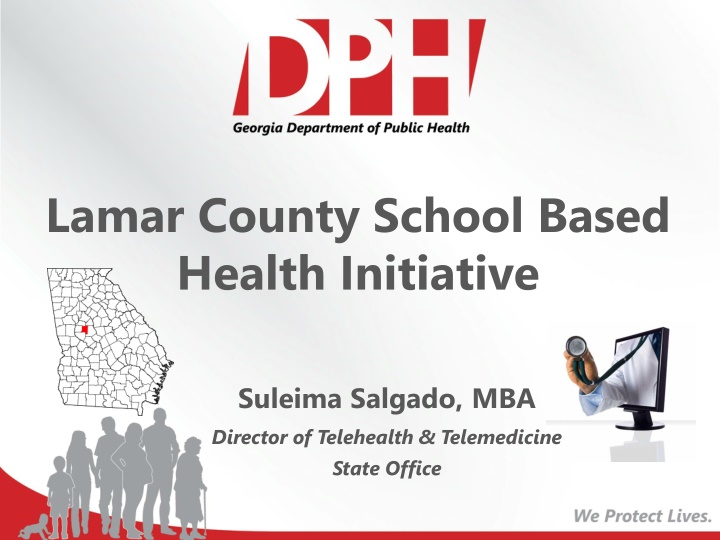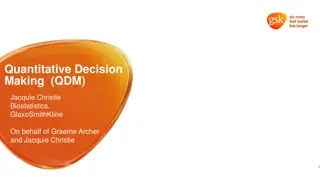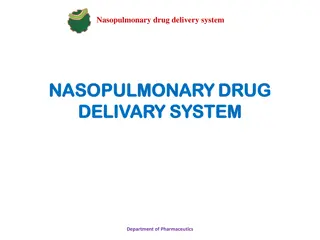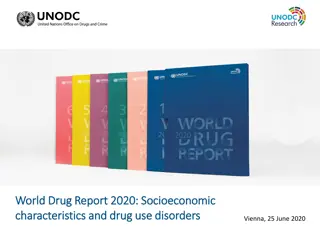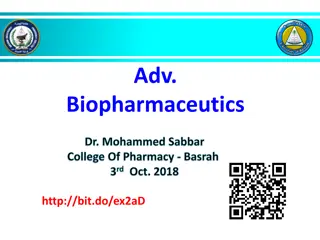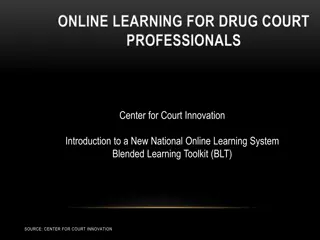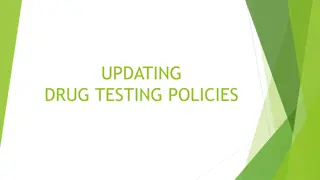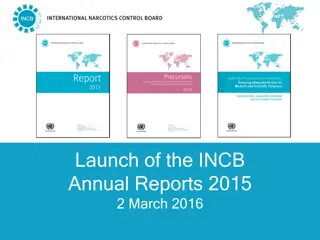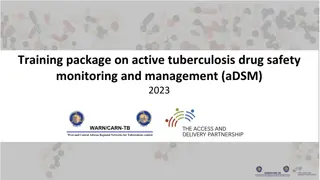Quantitative Decision-Making in Drug Development
This content delves into the use of quantitative decision-making tools to optimize drug development processes. It outlines the importance of utilizing quantitative criteria in assessing drug efficacy, toxicity, project success likelihood, and more. The rationale for adopting these tools, their effectiveness at different stages of clinical studies, and decision-making processes at various levels are elaborated upon. Real-world examples and scenarios are presented to illustrate the application of quantitative decision-making principles in the pharmaceutical industry.
Download Presentation

Please find below an Image/Link to download the presentation.
The content on the website is provided AS IS for your information and personal use only. It may not be sold, licensed, or shared on other websites without obtaining consent from the author.If you encounter any issues during the download, it is possible that the publisher has removed the file from their server.
You are allowed to download the files provided on this website for personal or commercial use, subject to the condition that they are used lawfully. All files are the property of their respective owners.
The content on the website is provided AS IS for your information and personal use only. It may not be sold, licensed, or shared on other websites without obtaining consent from the author.
E N D
Presentation Transcript
Lamar County School Based Health Initiative Suleima Salgado, MBA Director of Telehealth & Telemedicine State Office
Telehealth Goals Increase access to care Address the state s most pressing health challenges, including infant mortality, oral health, obesity and associated diseases Connect Georgians with the specialized care they need that may not exist in every community, i.e. monitoring of a high-risk pregnancy. Telehealth capability in 157 counties USDA funded (network / infrastructure) 22 telemedicine carts successfully deployed On average, approximately 300 patients are currently being served , per month via Telemedicine, statewide Six additional carts to be deployed in 2016 Mobile equipment for home health visits & disaster response
Telehealth Benefits Utilizing DPH nurses in local telehealth clinics allows patients to see specialty physicians at a location familiar to them and conveniently located in their communities. Cuts down on patient missed follow up appointments, increases adherence, better ability to control communicable diseases, less demand on families. Cost saving for families include but are not limited to travel expenses, time of work, care for other family/household members.
Providers and Presenters It is the goal of DPH to connect patients to providers in their local community and not extract business/medical services from local economy. In situations where a provider is not available within the community or through existing DPH referral services, DPH will look to surrounding counties and then eventually to metropolitan areas to find services. DPH also has a contract with the Georgia Partnership for Telehealth, for access to their telemedicine network, when needed. All DPH providers and presenters are trained in telemedicine through DPH s educational training platform. Acceptable presenters (RN, LPN, or CNA) are able to present patients and utilize billable services in our network. Q3014 billing code ($20.52 per encounter) for Presenting Sites
Telemedicine Originating Site Patient Site - the actual location where a patients is located Medical Cart interactive and secure telecommunications system Medical Cart Distant Site The site where physician or practitioner is located Distant Site
Telemedicine Projects High Risk OB Clinic Children s Medical Services Centering Pregnancy Ultrasound / Colposcopy Consult w/ Maternal Fetal Medicine Specialist Developmental & Genetics Endocrinology Nephrology Neurosurgery Pulmonology Sickle Cell Infectious Disease (HIV/AIDS) Patients at local clinics see DPH Infectious Disease specialist Mobile presentations from home or community setting WIC Nutrition Breastfeeding Support Nutrition Education Staff Training/Development
Lamar County Partners Lamar County Public Schools Pre-school through 12th grades Approximately 2,600 students DBHDD APEX project Lamar County Health Dept Located in Barnesville, GA Serving public in the areas of WIC, family planning, STD s, immunizations, well child checks, and more PH nurses located in Lamar County Elementary School Preventive services offered to all Lamar County students McIntosh Trail Community Service Board
Multi-Agency coordination of resources to achieve quality access for kids School-Based Health Center PARTNERS (Emory) Telepsychiatry Pilot DPH Project APEX DBHDD Partnership with local CSB to provide services at the schools Telemedicine equipment and TA provided by DPH SBHC led by DPH nurse On-site mental and behavioral health intervention by a licensed therapist SBHC DPH nurse presents students to CSB psychiatrist Currently provides annual well-checks Psychiatric consultation and intervention via tele- medicine/telepsychiatry pilot Exploring partnership with local pediatric practice for tele- medicine acute care Identify best practice implementation guidance & policy needs Program Evaluation Program Evaluation Program Evaluation
Where we are: Year 1 Workgroup consists of contribution from: DPH, DCH, DOE, DBHDD, DJJ, Voices, SBHC (PARTNERS), Macintosh Trail CSB, and Lamar County Schools. Procedures manual developed for school-based telemedicine, specifically for PH nurses Telehealth equipment installed, tested and staff trained at primary school and CSB site Referral and communication process developed for school personnel, SBHC nurse (DPH), and CSB therapist and psychiatrist (Project APEX) Ongoing enrollment and outreach efforts 1st clinic: October 2016 day, every other week (initial pilot) Target Group: Primary School and Middle School
FUNDING In-kind donations and grants are primary revenue for start-up; In-kind donation of equipment and training by DPH DBHDD grants to CSB for caseload development and initial service provision In-kind donation of space from the school for SBHC Grant from PARTNERS Insurance billing is the primary revenue source for services Medicaid billing (successful) ; parent must be present with child
CHALLENGES Enrolling as a provider on insurance panels The impact of lapse in Medicaid coverage of students On Providers ability to provide and bill for services On students ability to receive services and necessary prescriptions Psychiatry visit requires a parent to still be present, in person. E-prescriptions for controlled substances, currently sending via interoffice mail and has a 2-day delay
Aligning Program Evaluation to determine what s working and what to scale up across the state Improving Access: No. of students receiving services by service type PARTNERS at Emory via NIH Grant DBHDD & the Center of Excellence at GSU Fiscal Sustainability: Rate of Encounters reimbursed for Services Voices for Georgia s Children Improving Student Outcomes: Attendance Rates, school discipline, e.g. out-of-schools suspension Effective coordination & Service Delivery
Contact Information Suleima Salgado, MBA Director of Telehealth & Telemedicine suleima.salgado@dph.ga.gov 404.657.2305
